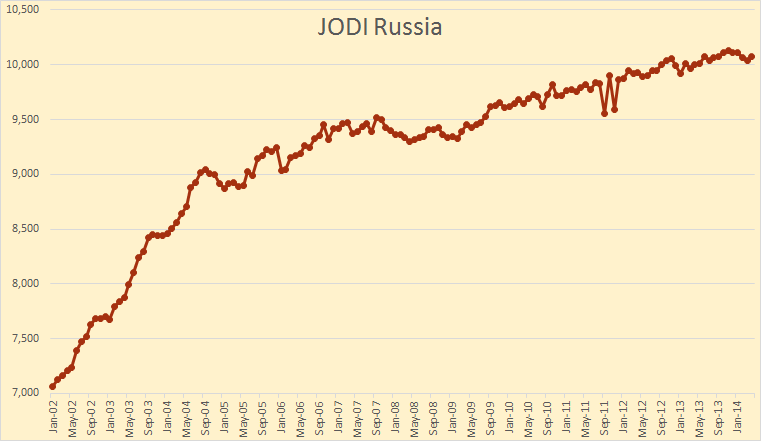The very best weekly analysis and evaluation of the global peak oil situation with additional briefings, charts and videos, added by the curator from accredited professional sources, to enhance the informed reader's knowledge and understanding of its deep complexities and evolving outlooks.
Everyone should "Bookmark ' this very important weekly post to stay abreast of this most critical aspect of global economics and life on this planet.
Peak Oil Review – 29 Feb 2016
By Tom Whipple
Quote of the Week
“The problem is going to be the money. Where is the money going to come from? A lot of people who have burned their fingers on (U.S. shale) are going to be reluctant to reinvest.”
Contents
1. Oil and the Global Economy
2. The Middle East & North Africa
3. China
4. The Briefs
1. Oil and the Global Economy
Oil had a good week for a change with New York futures rising 3.2 percent to close at $32.78 and London climbing 6.3 percent to close at $35.10. This time, there was more than just wishful thinking behind the price increase as pipeline outages shut in 600,000 b/d in Kurdistan and 250,000 b/d in Nigeria to cut global exports by 850,000 b/d. In both cases, it is unclear as to just when the pipelines will reopen. In Nigeria, the outage was due to an underwater leak while the situation in Kurdistan likely is related to one of many wars taking place in the region.
Despite the outages, the global market is still oversupplied and many traders are looking for the Saudi-Russian production “freeze” to morph into an actual production cut that will rebalance the markets. However, at the IHS-CERA oil conference in Houston last week, Saudi Arabia’s oil minister made it clear that a production cut was not going to happen despite all the hype and optimism. The Iranians seconded the sentiment saying they were not going to freeze or cut anything until their production was back to the pre-sanctions 4 million b/d. Moscow chimed in with the claim that even with a freeze its oil production could set a new post-Soviet record this year.

Amidst all the gloom and doom about low prices at the Houston conference, the IEA rolled out its most recent thoughts about the future of oil. The Agency naturally is concerned about the major cutbacks in capital investment that are underway and believes the industry will be hard pressed to recover after prices rebound later in the decade. The executive director of the IEA says he expects prices to climb back up to $80 a barrel by 2020. He also believes there will be a second leg to the US shale oil boom which will be quick to recover when prices rise and will send US domestic oil production to new highs by 2021.
In the meantime, the US oil industry is going through a major contraction with numerous bankruptcies and much selling off of assets. During the Houston conference, it was noted that the reason there are so few mergers is that many company debts become due the minute the company comes under new ownership. Few companies are willing to bear the upfront costs of paying off the debt of new acquisitions, even at bargain prices.
For the immediate future, it looks as if US shale oil production will be falling as the number of active drilling rigs continues to fall steadily. The week before last the rig count fell by 13 to 400. However, there still remains a backlog of hundreds of wells that have been drilled and are awaiting fracking before they can start producing. This backlog and increasing production from large offshore projects nearing completion in the Gulf of Mexico may be enough to keep US domestic production from falling as fast as many foresee. Even the Saudis noted in Houston last week that the US shale oil industry is very light on its feet. Once having established itself in an area with drill sites, permits, and the logistic infrastructure already in place, shale oil production can be increased very rapidly in comparison to what would be required to increase OPEC members’ production. The problem in increasing shale oil production will come when the most productive “sweet spots” are all drilled. Some knowledgeable observers believe this will come circa 2020.
 Concerns once again are increasing that a shortage of oil and oil product storage capacity in the US could drive oil prices considerably lower within the next few months. The main US storage facility and futures delivery point at Cushing, Okla. is already 80 percent full, is turning away some types of business, and at the current rate of filling will be completely filled in another four months. The same problem is occurring in other facilities along the Gulf Coast and in the mid-west. Refiners in the mid-west are already cutting back gasoline production as the demand is simply not there despite the very low prices ($1.11 in parts of Minnesota) and the much-ballyhooed economic recovery. Some analysts are convinced that another major down leg to the oil markets is virtually certain to occur before supply and demand come back into balance.
Concerns once again are increasing that a shortage of oil and oil product storage capacity in the US could drive oil prices considerably lower within the next few months. The main US storage facility and futures delivery point at Cushing, Okla. is already 80 percent full, is turning away some types of business, and at the current rate of filling will be completely filled in another four months. The same problem is occurring in other facilities along the Gulf Coast and in the mid-west. Refiners in the mid-west are already cutting back gasoline production as the demand is simply not there despite the very low prices ($1.11 in parts of Minnesota) and the much-ballyhooed economic recovery. Some analysts are convinced that another major down leg to the oil markets is virtually certain to occur before supply and demand come back into balance.
Another interesting situation is arising in the natural gas markets where prices touched a new 17-year low last week, below $1.75 per million BTUs. Most believe the cost of producing shale gas is in the vicinity of $4 to $6 per million; it is obvious that natural gas producers, and Wall Street, are losing a lot of money. Currently, prices are being pushed down by an unusually warm winter and stockpiles which are about 30 percent above normal for this time of year. Close examination of US natural gas numbers, however, shows that production is starting to drop and is now down about 1.2 billion cubic feet/day from last September’s output.
 Obviously, prices cannot remain this low for long and a rebound before the end of the year is highly likely. Many gas producers used hedges to capture the $5 per million prices that obtained in 2014, but those hedges have now expired and producers are fully exposed to the low market prices. Some analysts believe that we will soon see rapid cutbacks in production with even the possibility of shortages later this year. More electricity producers are switching to natural gas to comply with EPA regulations and US LNG exports are just getting underway amidst much hype about America supplying Europe and the world with cheap natural gas.
Obviously, prices cannot remain this low for long and a rebound before the end of the year is highly likely. Many gas producers used hedges to capture the $5 per million prices that obtained in 2014, but those hedges have now expired and producers are fully exposed to the low market prices. Some analysts believe that we will soon see rapid cutbacks in production with even the possibility of shortages later this year. More electricity producers are switching to natural gas to comply with EPA regulations and US LNG exports are just getting underway amidst much hype about America supplying Europe and the world with cheap natural gas.
Conventional natural gas production in the US is down by 17 billion cubic feet/day since 2008 and continues to drop at about 5 percent a year. While this has been made up in recent years by the rapid increase of shale gas, it seems that this too will be coming to an end, both through low prices and geologic constraints. Given the ongoing decline in conventional gas production and the rapid depletion that takes place in existing shale gas fields, it will take an increase of 15 billion cubic feet/day of new production in 2016 just to keep US production level for the year much less meet the expected export demand. This demand is forecast to reach 7 million cu. feet/day by the end of the decade.
All this says that there is likely to be a major rebound in natural gas prices to economic levels in the next year or so, provided financially strapped drillers can find the financing in today’s markets. LNG exports do not seem to have a bright future.

READ MORE


No comments:
Post a Comment